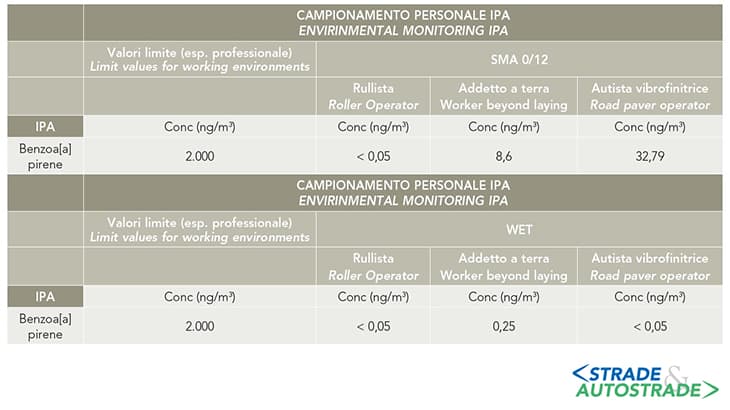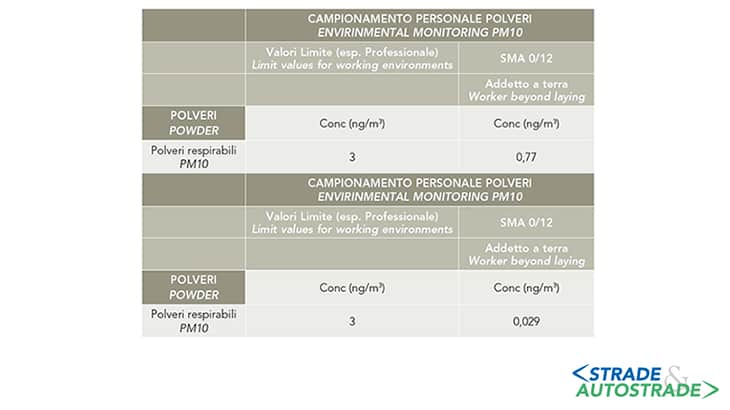![]() Per la versione in Italiano: https://www.stradeeautostrade.it/asfalti-e-bitumi/il-green-new-deal-di-asphalt-rubber/
Per la versione in Italiano: https://www.stradeeautostrade.it/asfalti-e-bitumi/il-green-new-deal-di-asphalt-rubber/
In recent years the world has witnessed a growing awareness of ongoing climate change and policies aimed at shaping the growth of our civilization towards sustainable development, which reduces both CO2 emissions and the consequent greenhouse effect, and consumption of natural raw materials favoring the development of a circular economy with the recycling of end-of-life materials otherwise destined for landfills.
The world of road construction does not escape this trend and a desirable and quick approval of the CAMs relating to road infrastructure will induce the Contracting Stations and the Companies in the sector to adopt an approach aimed at minimizing the consumption of natural raw materials, at reducing the temperatures of production and laying of asphalt concretes to limit emissions into the atmosphere, to favor technical solutions that provide for the optimization of noise emissions linked to vehicular traffic and finally to provide for the optimization of the reuse at the end of life of the materials used, all ensuring high mechanical performance.
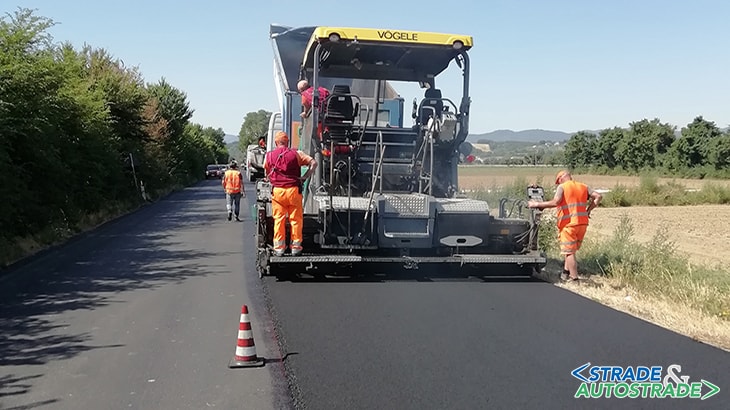
Asphalt Rubber technology, consisting of the modification of bitumen with recycled pneumatic rubber powder (PFU) wet method, was a precursor of these needs: it was born in the 1960s in the United States to meet a dual need:
- technical requirement: to study a solution for a high-performance elastic asphalt concrete capable of resisting cracks in road surfaces induced by the high thermal gradients present in a wide range of the United States territories;
- environmental need: to find a solution to the growing deposits of end-of-life tires that increasingly gave rise to fires with a high risk of dioxin production as well as large quantities of CO2.
Asphalt Rubber bitumen is a modified bitumen with a minimum percentage on the total weight of 15% of recycled tire rubber powder incorporated by the wet process, which reacted during a period of time long enough to allow the digestion of the rubber or the absorption of the maltenic fraction of the bitumen by the rubber granules that swell to form a gel inside the bituminous matrix.
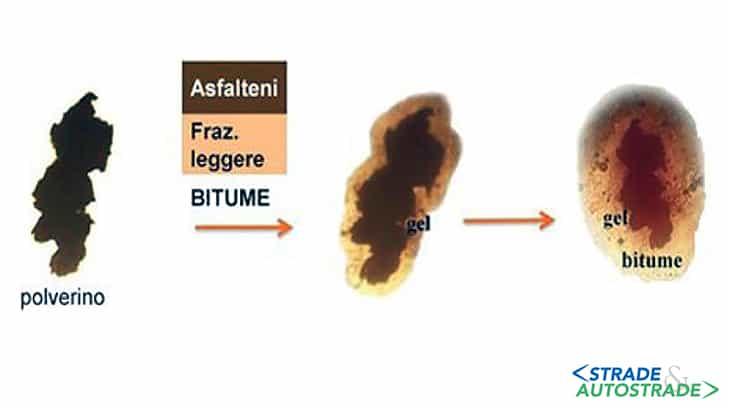
The addition of the rubber powder changes the chemical structure of the bitumen and the physical-mechanical characteristics of the basic bitumen:
- penetration (25/55 dmm);
- softening point (> 60 °C);
- elastic recovery (> 60%);
- viscosity (eight-ten times higher than standard bitumen).
The wet process is the only one regulated with its own standards and test methods by the international standard (ASTM 6114: 97) and also complies with the UNI EN 14023 standard.
Asphalt Rubber Italia Srl was born in 2006 to introduce Asphalt Rubber technology in Italy, undertaking research and development with the main Italian universities, such as the University of Pisa, the Politecnico delle Marche and the Polytechnic of Turin, aimed at developing Asphalt Rubber technology both for the development of new bitumen formulations and for the definition of specific mix designs of asphalt concrete that optimize specific performance of road pavements especially in light of the growing interest in eco-friendly solutions for road pavements.
The development was divided into four main lines (Figure 3).
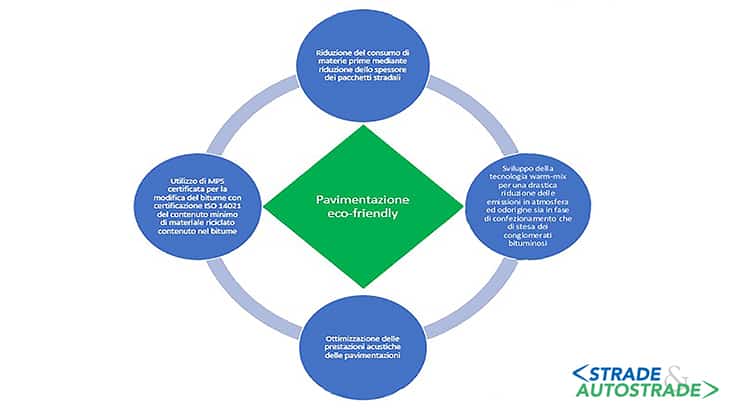
Bitumen modified exclusively with recycled second raw material and whose minimum content is certified according to UNI ISO 14021
Asphalt Rubber Italia Srl is the only Italian bitumen producer that produces modified bitumen with a minimum post-consumer recycled content of 18.5%.
This result is the first fundamental element of Asphalt Rubber Italia Srl’s policy to promote road pavements with low environmental impact that meet the requirements of future CAMs for road infrastructures.
The production cycle, from the procurement of raw materials to packaging and process controls, has been certified by Abicert Sas according to UNI ISO 14021: 2016 for the minimum recycled content contained in Rubbit 20 and Rubbit 20 WM bitumen.
This result was made possible through a careful selection of the supply chain by resorting to suppliers of recycled tire rubber powder from the Ecopneus consortium that guaranteed the highest quality and environmental standards of the product, as:
- production process in accordance to UNI ISO 9001:2015 standard;
- production process in accordance to UNI ISO 14001:2015 standard;
- EMAS Certification;
- product Certificationin in accordance to REMADE in Italy VERS 4.2016 standard;
- production process in accordance to Ecopneus Technical Specifications.
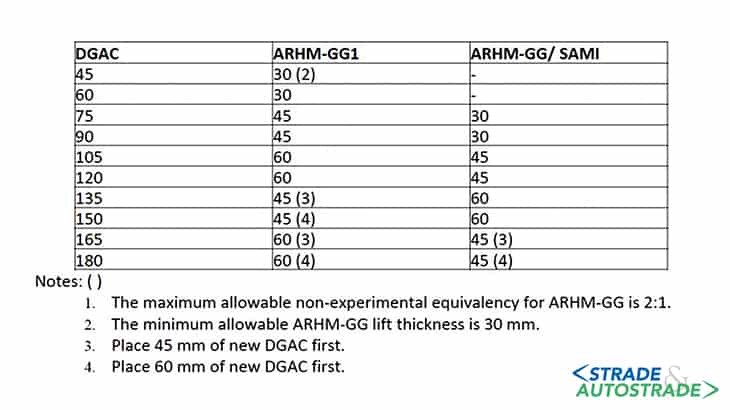
The reduction of raw material consumption by reducing the thickness of road packages
Asphalt rubber concrete are historically characterized by the following characteristics:
- road pavement packed with high elastic module asphalt concretes that allow for minor deformations induced inside the road pavement;
- greater fatigue resistance of the pavement due to the elastic properties of the binder used;
- greater resistance to aging of the pavement: the modification of the bitumen with crumb rubber affects the maltenic fraction of the binder which constitutes the most volatile fraction of the bitumen itself, creating a gel inside the bitumen matrix which prevents oxidation, keeping its elastic characteristics longer.
These characteristics have been verified in the United States through a ten-year monitoring of over 100 test fields to compare the performance of traditional bituminous conglomerates with Asphalt Rubber bituminous conglomerates.
This activity led to the Caltrans (Department of Transportation of the State of California) conversion table for the reduction of the thickness of road pavements through the use of Asphalt Rubber bituminous conglomerates which is recognized by the United States Department of Transportation.
Asphalt Rubber Italia Srl supported the technical definition of several projects with significant reductions in the thickness of road pavements in Italy.
The best known work for studies and publications (Ecopneus specific monograph year 2017) regarding the thickness reduction design and its performances during time ofthe road pavement is the construction of the Variante di Canali in the Municipality of Reggio Emilia.
The package created in place of that of the original project is well summarized in Figure 5 below.
In environmental terms, the advantages obtained with this reduction in thickness are evident:
- lower consumption of raw materials (aggregates and bitumen);
- lower emissions related to the transport of raw materials to the asphalt plant;
- lower emissions and energy consumption for the production of a smaller quantity of asphalt concrete;
- lower emissions related to the transport of a smaller quantity of asphalt concrete to the paving site;
- lower emissions and energy consumption due to the laying of a smaller quantity of asphalt concrete.
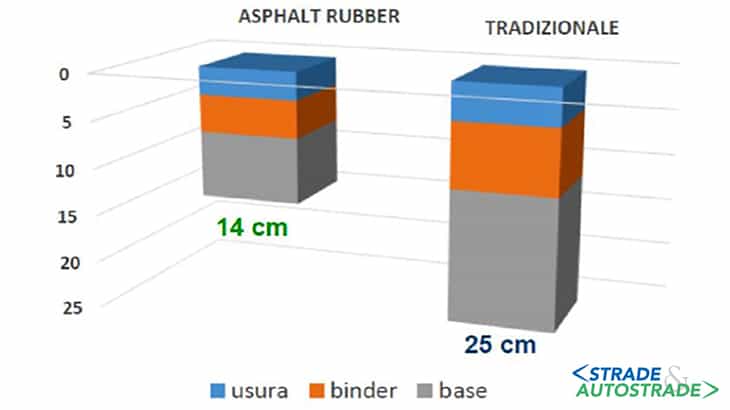
Not immediately evident, but analytically calculable, is also the reduction of CO2 emissions due to a virtuous use of crumb rubber compared to the simple reuse of it as fuel for the production of energy.
Advantages related to the lower impact of vehicular traffic linked to asphalting operations on normal roads are difficult to quantify but they also are very evident.
Asphalt Rubber Italia Srl has developed a specific software to analytically quantify the emissions and energy consumption associated with the packaging and laying of the different asphalt mix solutions so as to certify the environmental advantages of the solution adopted.
Recent studies conducted by Prof. Maurizio Bocci of the Politecnico delle Marche have also shown that even the end of life of these floors allows a more virtuous recycling of them compared to other road pavements.
The milled material resulting from Asphalt Rubber pavements at the end of its life, is recyclable in road surfaces in a more effective and efficient way: due to the lower degree of oxidation of aged bitumen, the mixes of asphalt concrete obtained with a percentage of milled (in the tests carried out up to 30%) from old Asphalt Rubber pavements allow to obtain less rigid and more elastic pavements regardless of any addictives used to regenerate oxidated bitumen.
Development of warm-mix technology
Asphalt Rubber Italia Srl has developed and validated with the University of Pisa a formulation of Asphalt Rubber bitumen for the packaging of warm asphalt concretes.
This solution, in addition to reducing consumption and emissions into the atmosphere during the production phases, reducing the exit temperatures of the asphalt mix by about 40 °C, allows paving temperatures between 110 and 135 °C.
In this range of paving temperatures, the PAH emissions are effectively drastically reduced and the odor emissions of the asphalt concrete are canceled.
By way of example, the results of the environmental monitoring carried out during the NEREiDE project are shown below:
- the waste and chemicals laboratory monitored the emissions during the laying phase of the NEREiDE Project (December 2017-January 2018) on the experimental site identified on the S.R.T. 439 “Sarzanese-Valdera” in the municipality of Massarosa;
- in December 2017, in the locality of Bozzano/Quiesa from km 17+240 to km 17+615 in correspondence with the implementation of a SMA 0/12 mix laid at a temperature of 180 °C;
- in January 2018, in the locality of Pian del Quercione from km 12+514 to km 12+897 in correspondence with the implementation of a gap graded wet mix applied at a temperature of 140 °C.
The analytical results can be summarized in Figures 6, 7 and 8 above.
Optimization of the acoustic performance of road pavements
In the last ten years, Asphalt Rubber Italia Srl has carried out in collaboration with the University of Pisa various studies and experiments (Leopoldo Project, NEREiDE 1 Project, NEREiDE 2 Project, ANAS experimental test field) aimed at optimizing both low noise emission pavements and noise-absorbing pavements.
Low-noise emissions pavements are road surfaces with optimized texture aimed at reducing the noise generated by the contact between the tire and the macro-texture of the pavement.
In particular, two types of mix designs have been developed:
- Asphalt Rubber Dense Gradedwith optimized texture ideal for urban roads characterized by optimization speeds of up to 50 km/h. The findings identified in the various experiments showed an improvement of between 4 and 5 dB(A) compared to a traditional pavement laid at the same time;
- Asphalt Rubber Gap Graded with optimized texture ideal for urban and extra-urban roads with travel speeds of up to 80 km/h.
The measurements made in the various experiments showed an improvement of 5 dB(A) compared to a traditional pavement laid at the same time.
Figure 9 represents a texture spectrum of a friction course pavement: the arrows indicate the modifications to be made to the spectrum to obtain a low acoustic emission pavement.
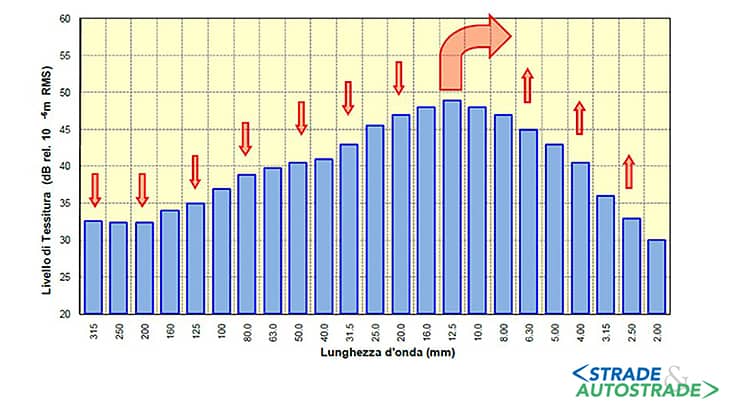
Low noise emission pavement texture spectrum
Noise-absorbing pavements are open pavements that exploit the voids in the asphalt mix to dissipate the peak pressure of the compressed air thread between the tire and the pavement: the lower Δp reduces the sound emission linked to the expansion of the air thread to rear of tire.
The noise-absorbing pavements are ideal for travel speeds in excess of 70 km/h and therefore for extra-urban roads and highways.
In particular, two types of mix design have been developed:
- Asphalt Rubber Open Graded. The monitorings carried out in the various experiments showed an improvement of between 4 and 5 dB(A) compared to a traditional pavement laid at same time. Due to the stability of its mechanical characteristics and acoustic performance over time, this mix design has been adopted by Slovenia as a solution for draining and noise-absorbing pavement for the motorway network;
- Asphalt Rubber Dren with optimized texture with better acoustic performance than a traditional double draining layer.
The noise absorption coefficient for a 4 cm pavement is in Figure 10. The expected noise reduction compared to a traditional pavement laid at the same time is 6 dB(A).
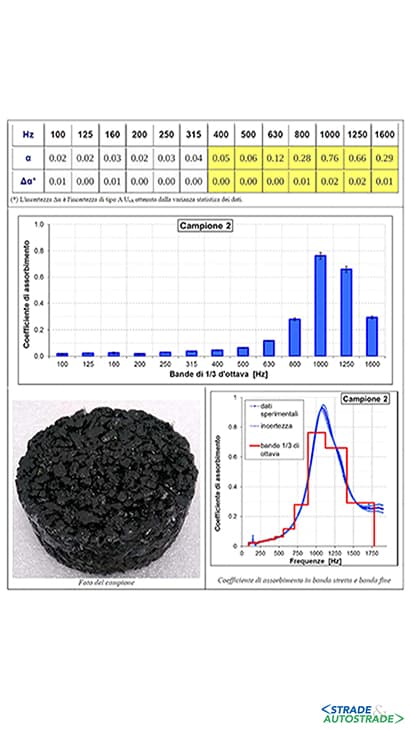
Conclusion
Asphalt Rubber mixes represent a valid solution for the realization of high performance road pavements that contemplate the full environmental sustainability of the infrastructures, pursuing and meeting the objectives that the green economy and future CAM Strade are outlining as cornerstones of growth sustainable.
![]() Per la versione in Italiano: https://www.stradeeautostrade.it/asfalti-e-bitumi/il-green-new-deal-di-asphalt-rubber/
Per la versione in Italiano: https://www.stradeeautostrade.it/asfalti-e-bitumi/il-green-new-deal-di-asphalt-rubber/



